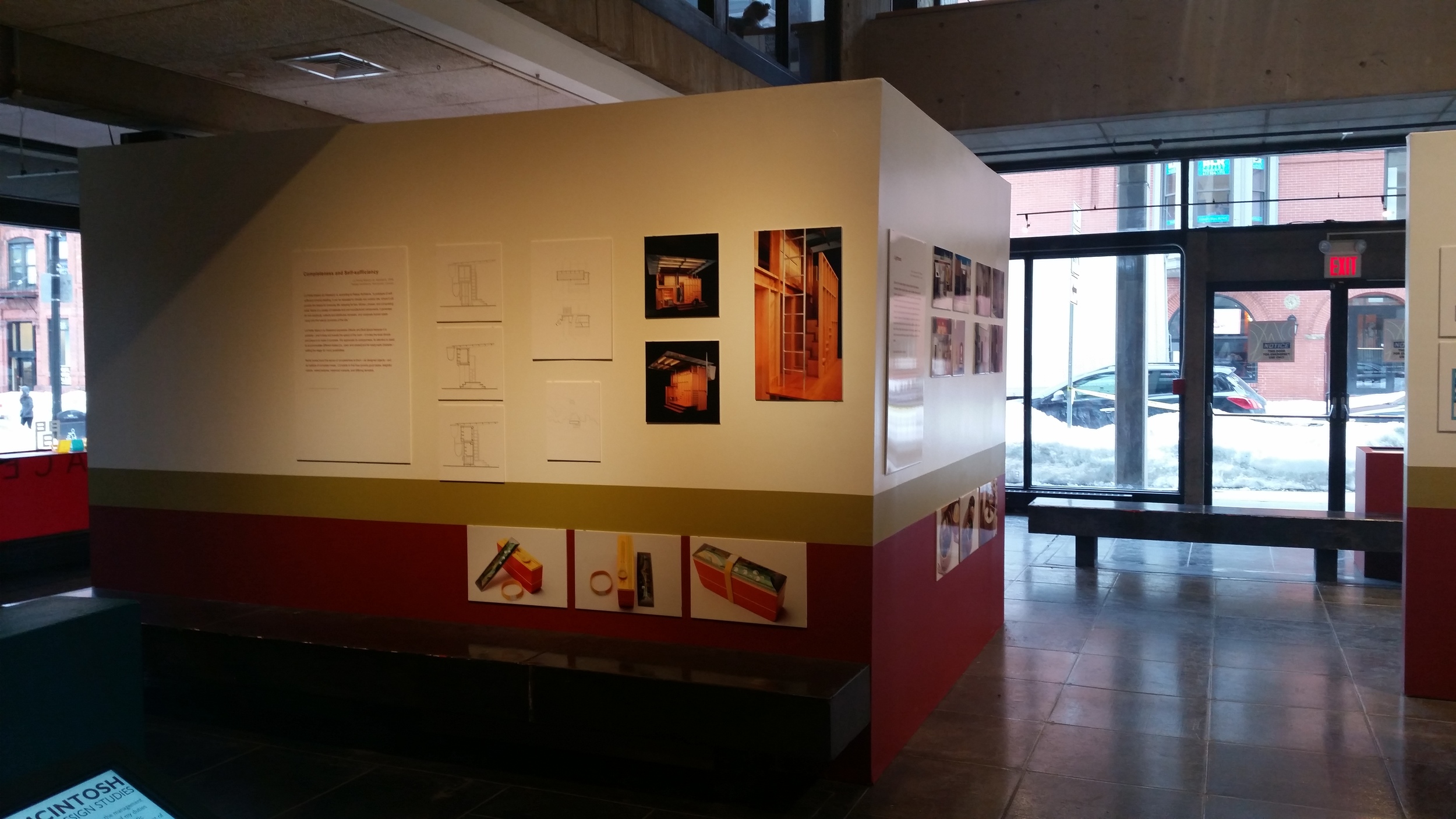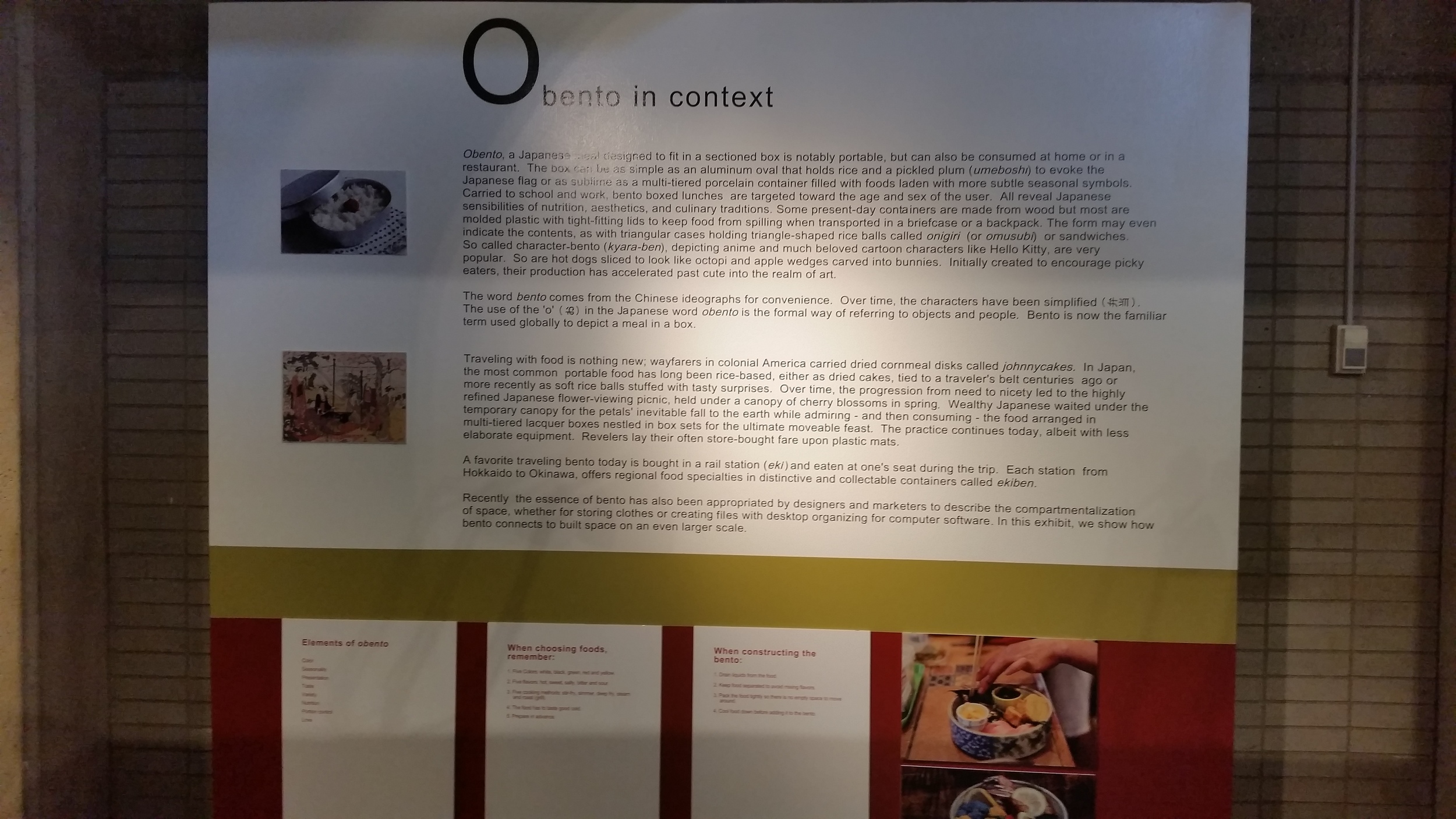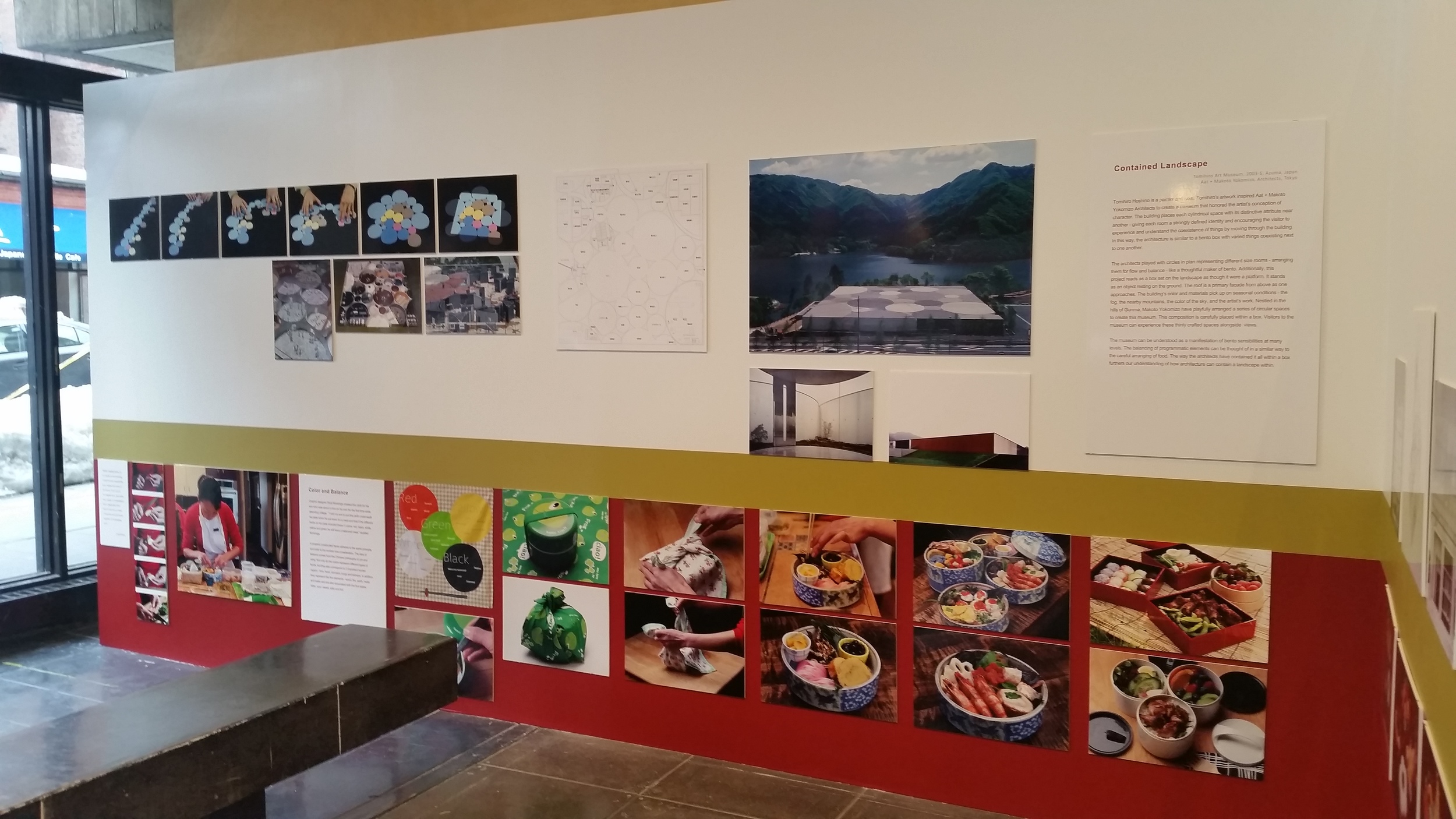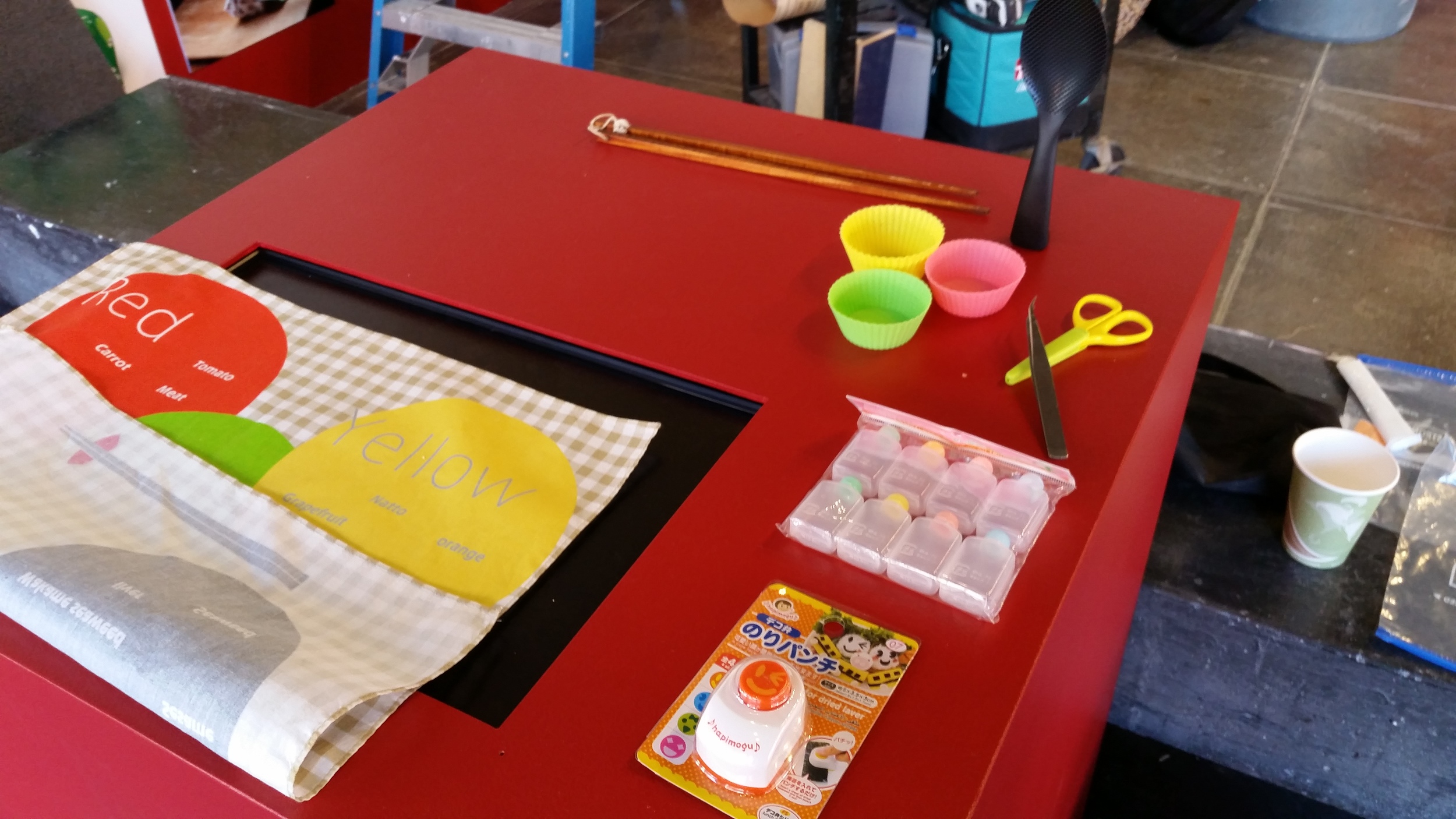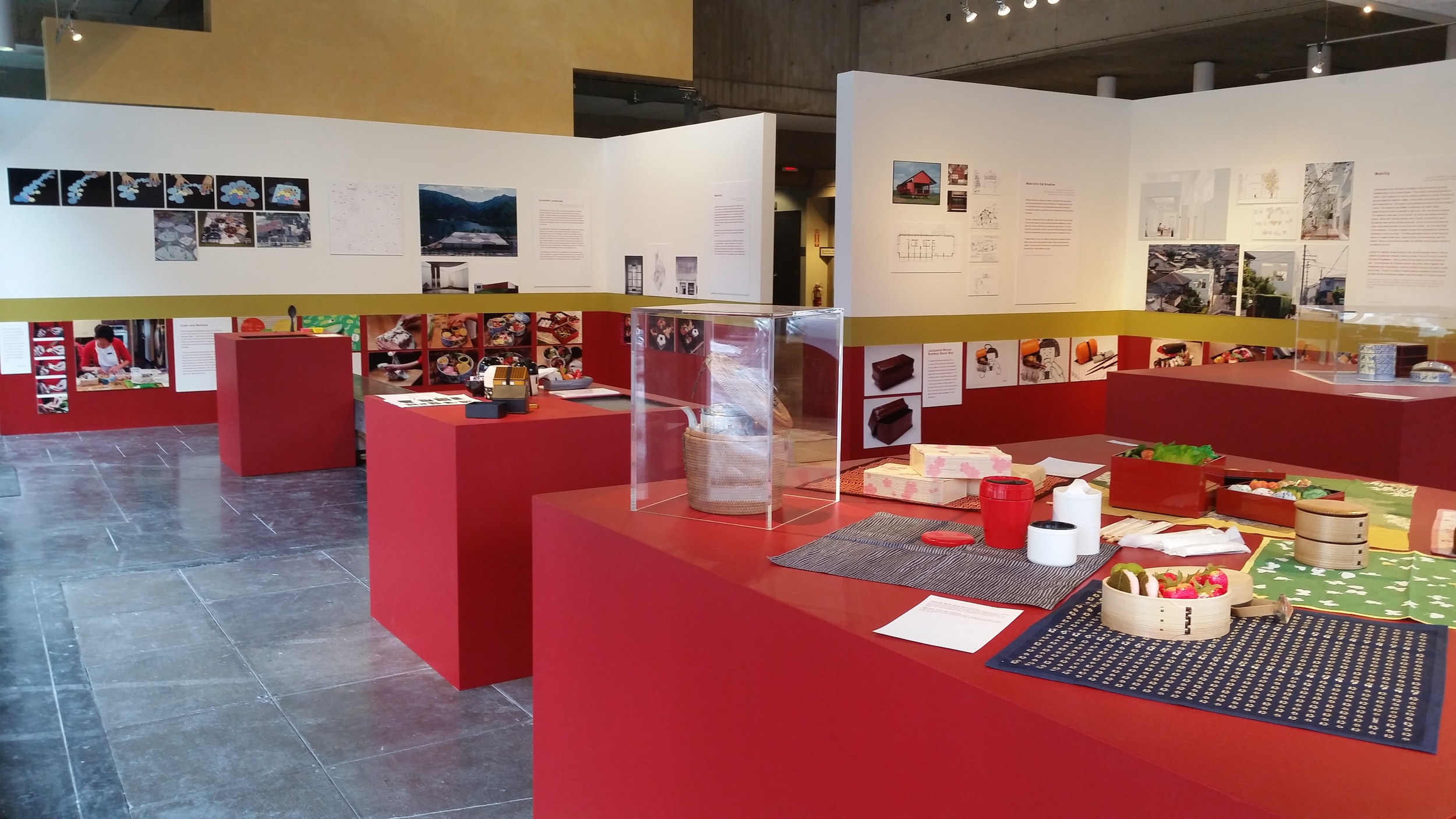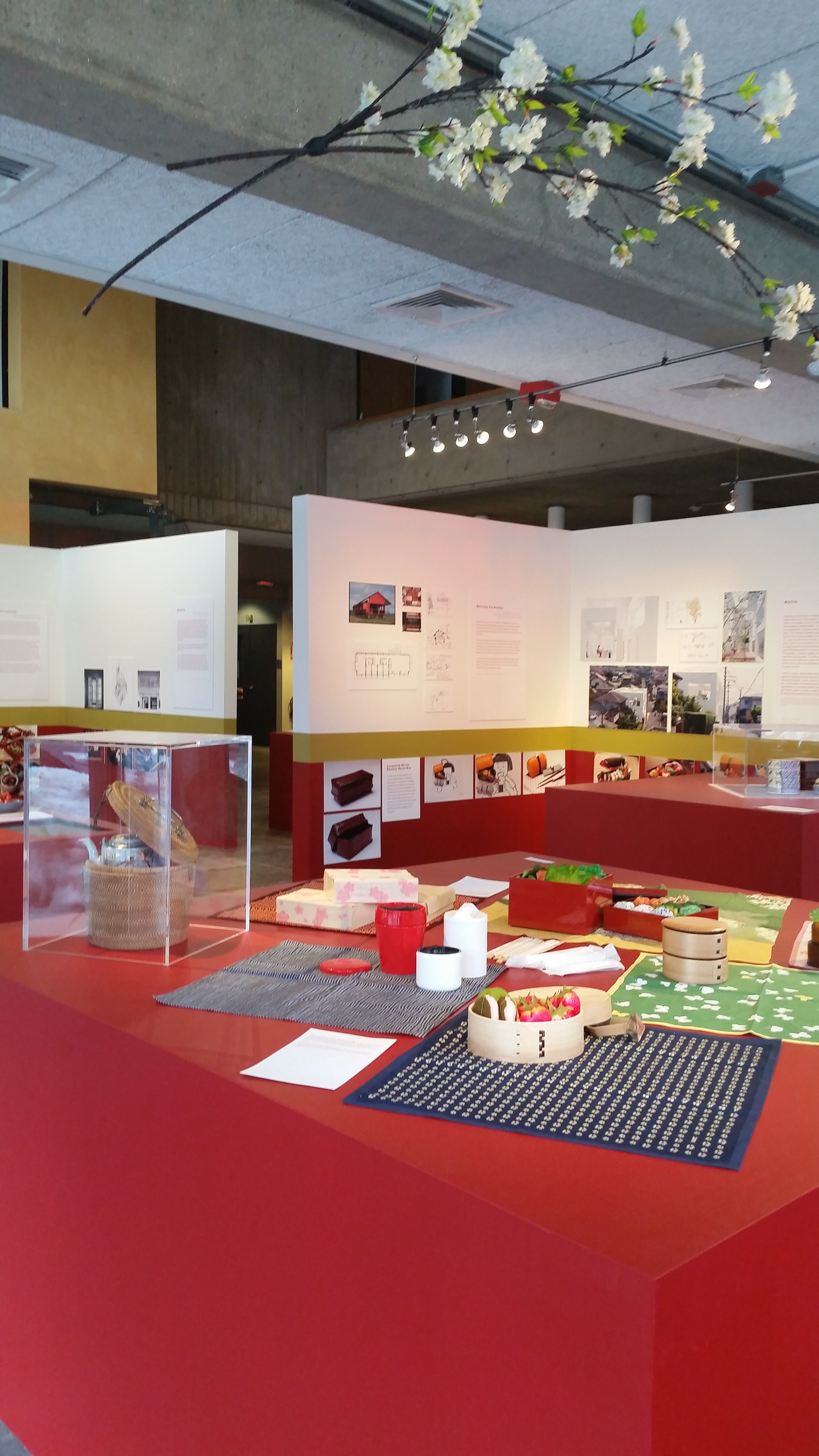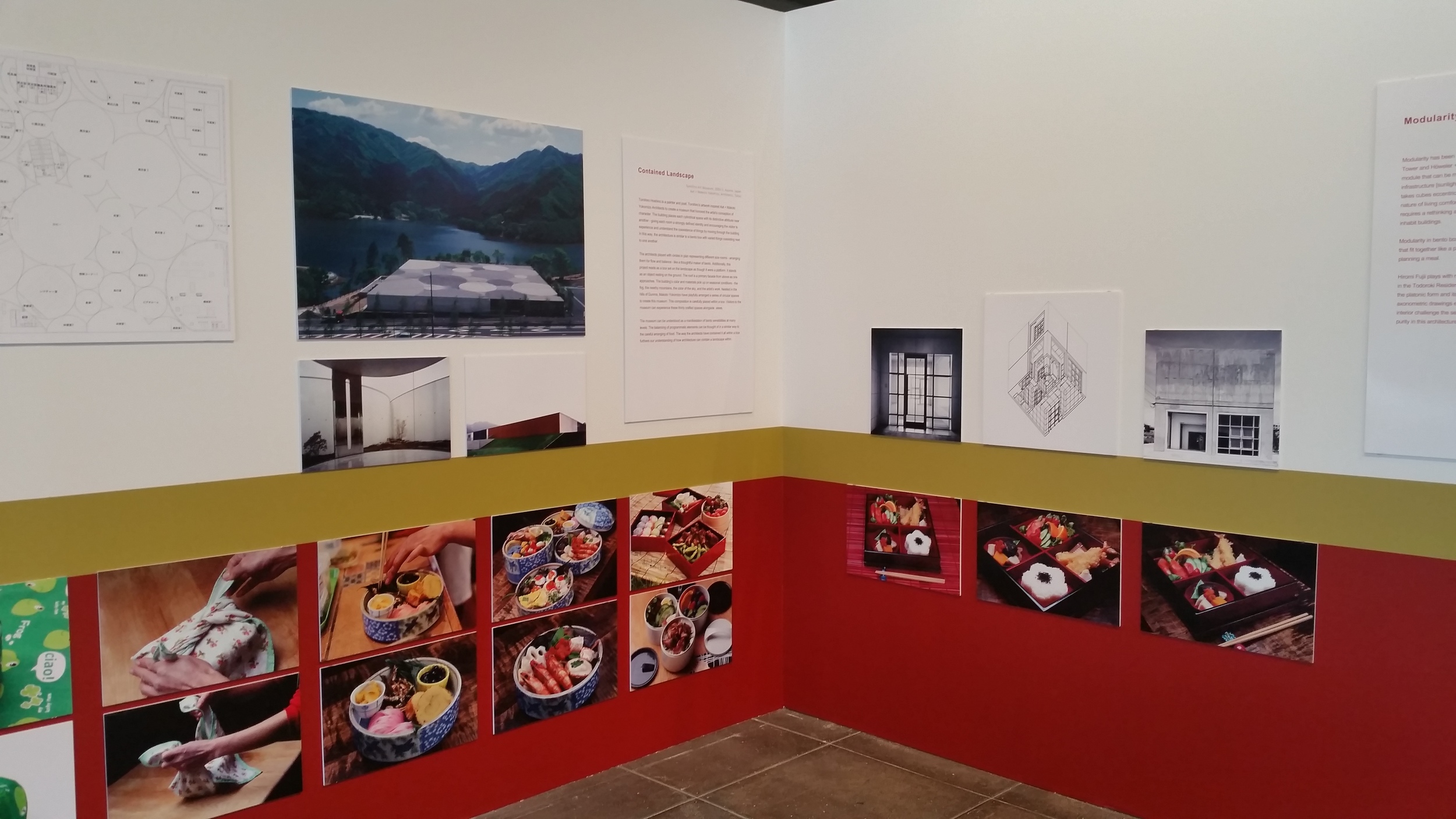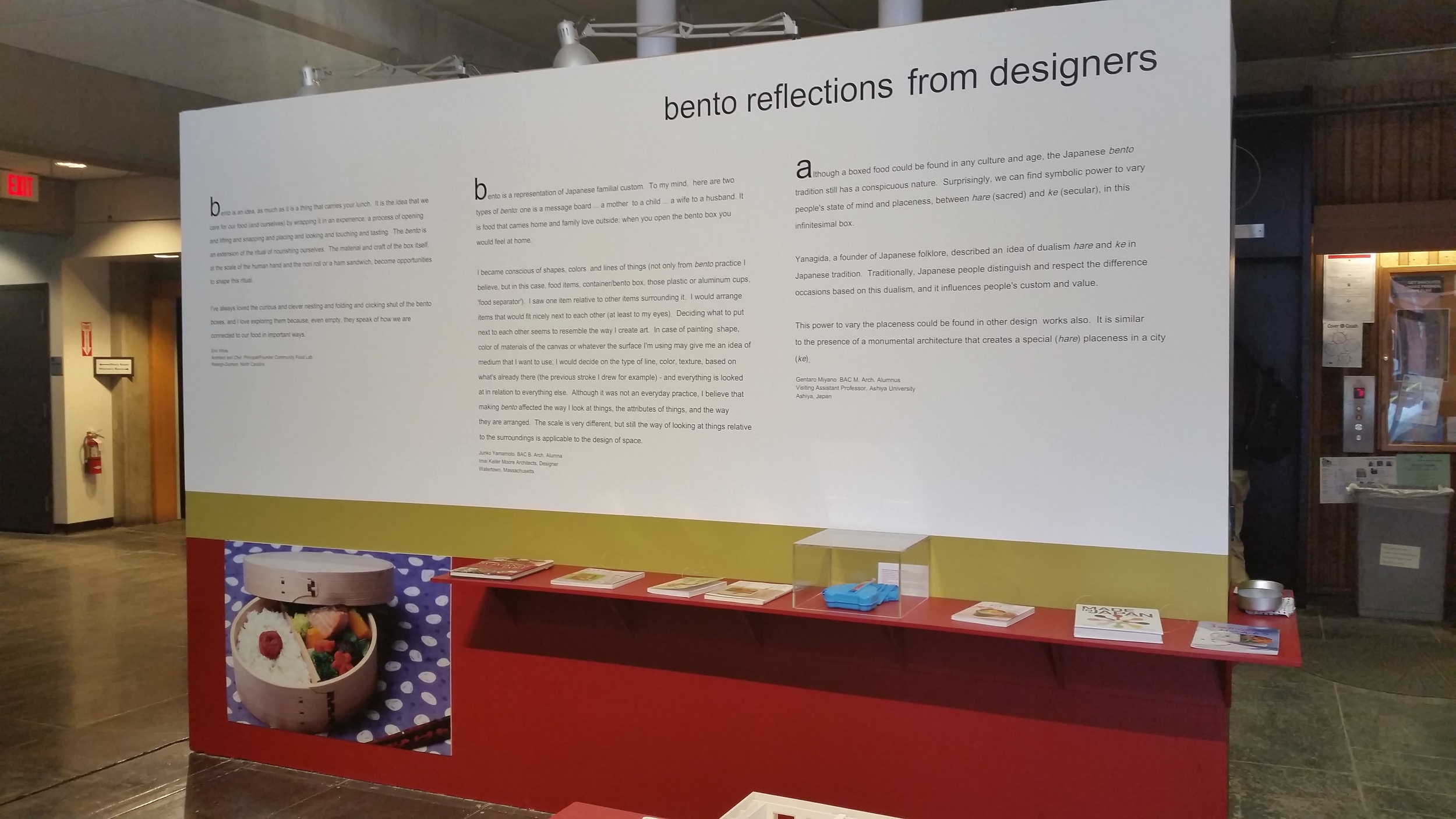Obento and built space: Japanese boxed lunch and architecture
Using miniature environments that individuals carry with them as a touchstone for good design, we explore formal and experiential principles common to the boxes and to the buildings. We share the story of one manufacturer of lacquered plastic bento boxes and the art of making a carefully crafted boxed lunch in relation to the recipient, to the season, and to the maker’s intent.
Like good architecture, bento boxes are ordered, arranged, and set within a landscape, which for the boxes is a furoshiki, the cloth that serves as both bag and placemat. Bento boxes from the collection of Debra Samuels, Japanese food specialist and cookbook author, and the work of architects and artists Hiromi Fujii, Sou Fujimoto, KOKO Architecture + Design, Glenn Murcutt, Hiroshi Nakamura, Patkau Architects, and Aat + Makoto Yokomizo create a dialogue between two scales of work: micro (bento) and macro (architecture). Each scale has its own ways of coming into being through transaction, materiality, modularity, mobility, completeness, and compactness. Each work has an explicit function and an aspiration to hold cultural expression in its form.















